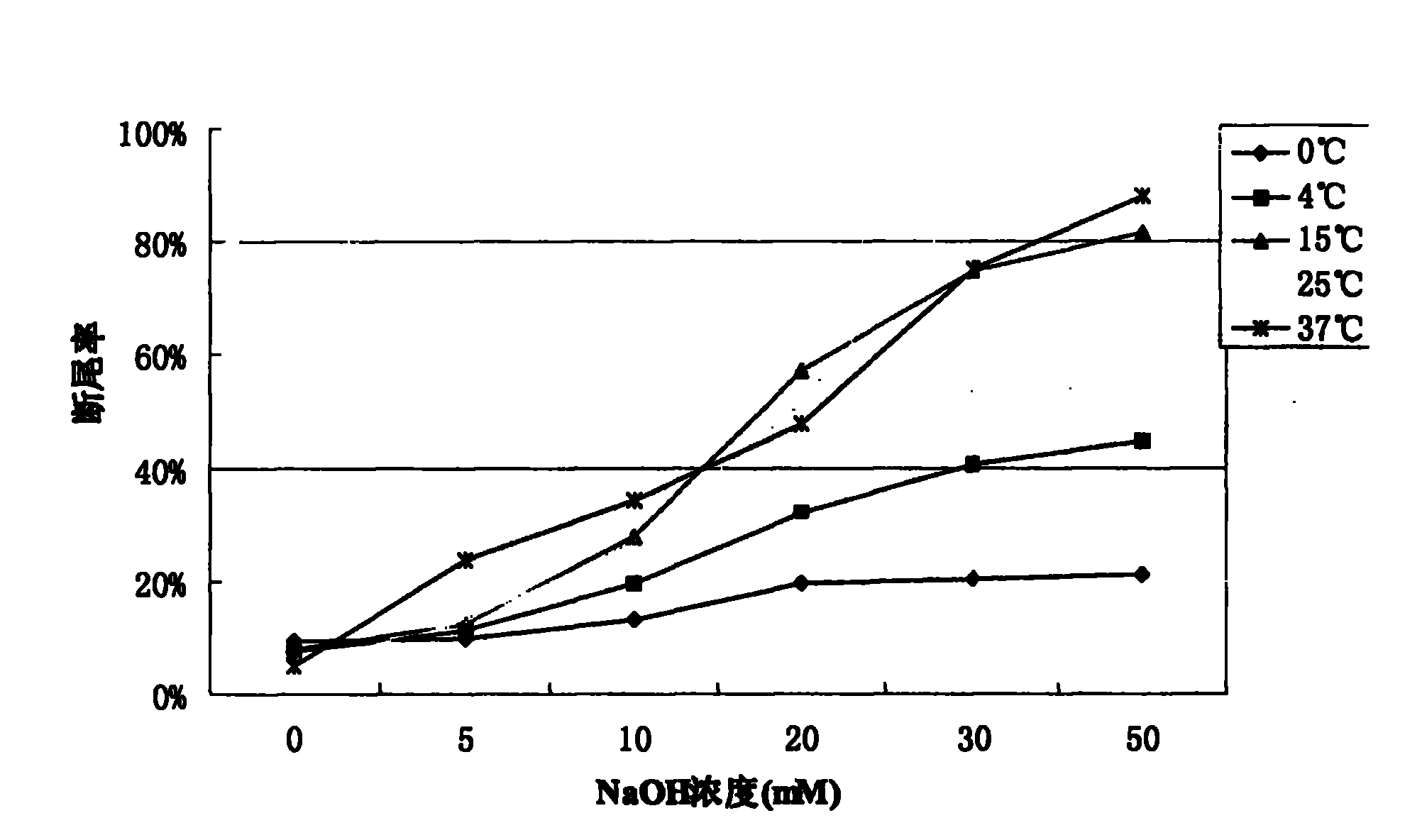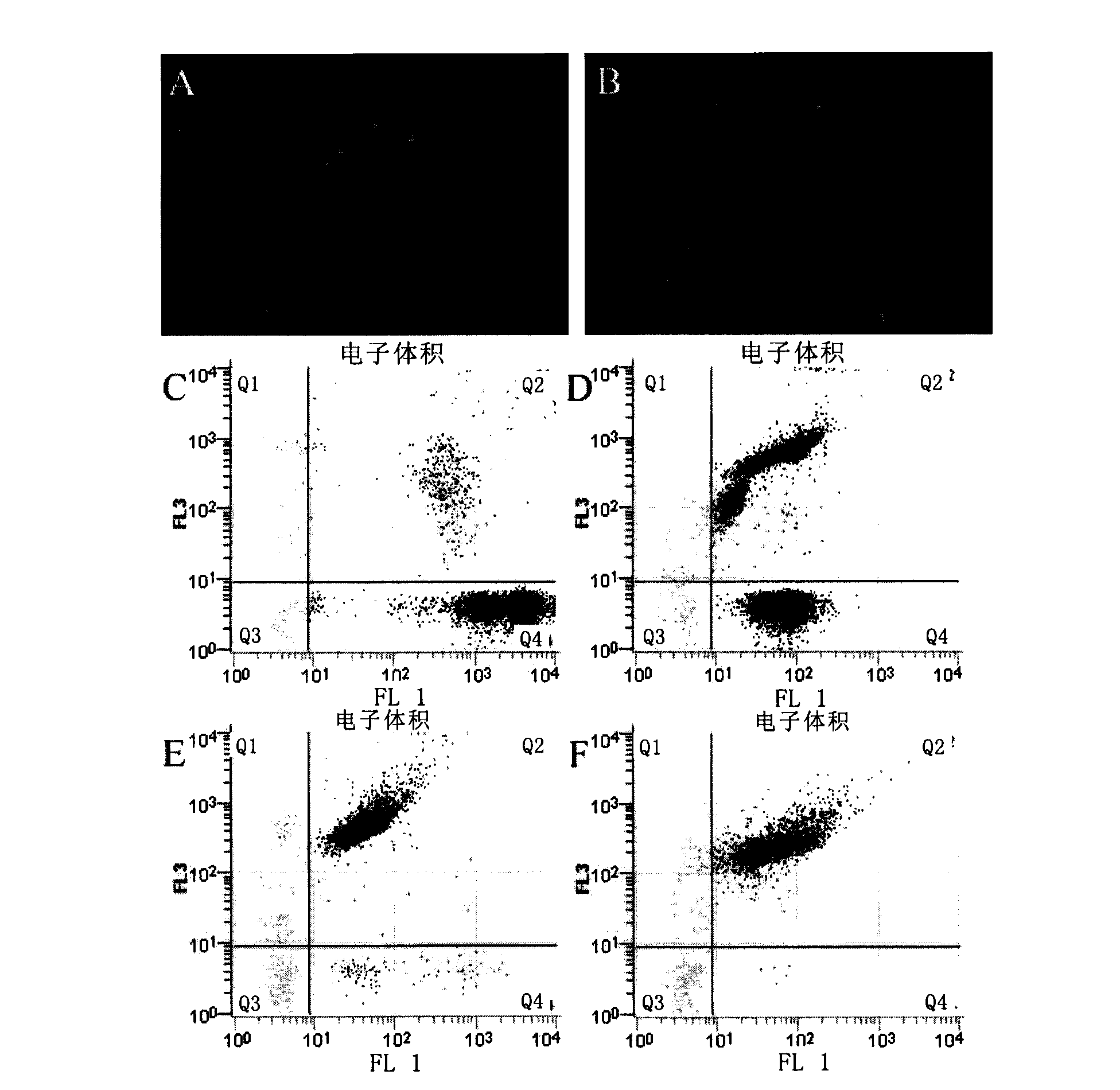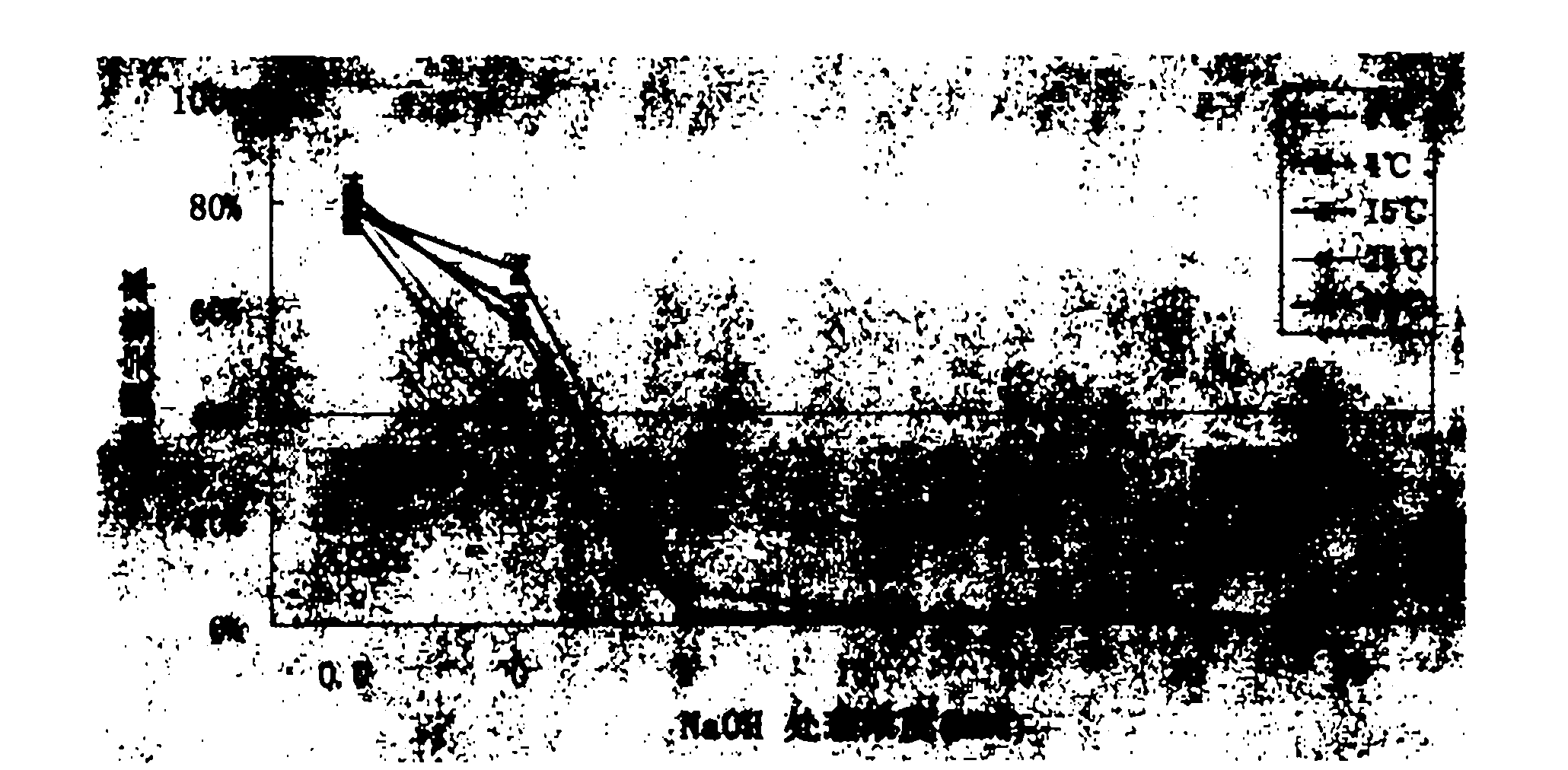Sperm treating method
A treatment method, sperm technology, applied to other methods of inserting foreign genetic materials, using micro-injection, recombinant DNA technology, etc., can solve the problem of unsatisfactory head-to-tail separation
- Summary
- Abstract
- Description
- Claims
- Application Information
AI Technical Summary
Problems solved by technology
Method used
Image
Examples
Embodiment 1
[0083] Effect of NaOH on Separation of Head and Tail of Sperm in Mice
[0084] The inventor treated mouse epididymis tail sperm with 5-50mM NaOH solution at 0-37°C, observed under a microscope, and found that after 30 minutes of treatment with 5mM NaOH concentration, the sperm's activity rate had dropped to 0, and only a few Sperm are still swimming. See figure 1 .
[0085] The results show that with the increase of NaOH concentration, the efficiency of head-to-tail separation is gradually increasing, but different treatment temperatures have a significant impact on the effect of sperm head-to-tail separation. At 0-4°C, the effect of sperm head-to-tail separation is significantly lower than that under other temperature conditions .
Embodiment 2
[0087] Effect of NaOH on the Integrity of Mouse Sperm Plasma Membrane
[0088] The inventor used Transgreen / PI to counterstain the sperm after NaOH treatment, observed under the fluorescence microscope and detected its plasma membrane integrity with flow cytometry respectively ( figure 2 ), the experimental data show that ( image 3 ).
[0089] The results showed that 90% of the sperms with plasma membrane damage were treated with 5mM NaOH for 30 minutes, and the plasma membrane damage of sperm with a concentration of NaOH above 10mM was close to 100%.
Embodiment 3
[0091] Effects of NaOH on DNA Integrity of Mouse Sperm
[0092] With the increase of NaOH concentration, the degree of sperm DNA damage is greater. see results Figure 4 and Table 1.
[0093] Table 1 Effect of NaOH concentration and incubation temperature on mouse sperm DNA Impact
[0094]
[0095] * P<0.05, compared with the negative control group
[0096] The results showed that at 37°C, even 10mM NaOH had significant damage to sperm DNA, and low temperature could reduce the effect of NaOH on sperm DNA. At 0°C, 50mM NaOH incubated sperm for 30 minutes, and no significant damage occurred to sperm DNA .
PUM
 Login to View More
Login to View More Abstract
Description
Claims
Application Information
 Login to View More
Login to View More - R&D Engineer
- R&D Manager
- IP Professional
- Industry Leading Data Capabilities
- Powerful AI technology
- Patent DNA Extraction
Browse by: Latest US Patents, China's latest patents, Technical Efficacy Thesaurus, Application Domain, Technology Topic, Popular Technical Reports.
© 2024 PatSnap. All rights reserved.Legal|Privacy policy|Modern Slavery Act Transparency Statement|Sitemap|About US| Contact US: help@patsnap.com










